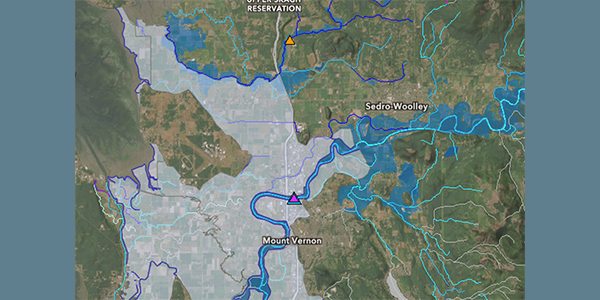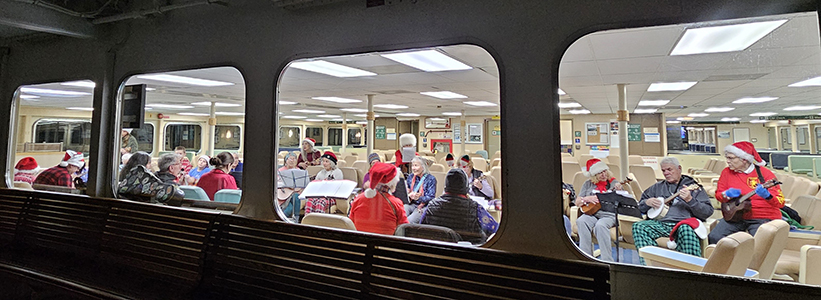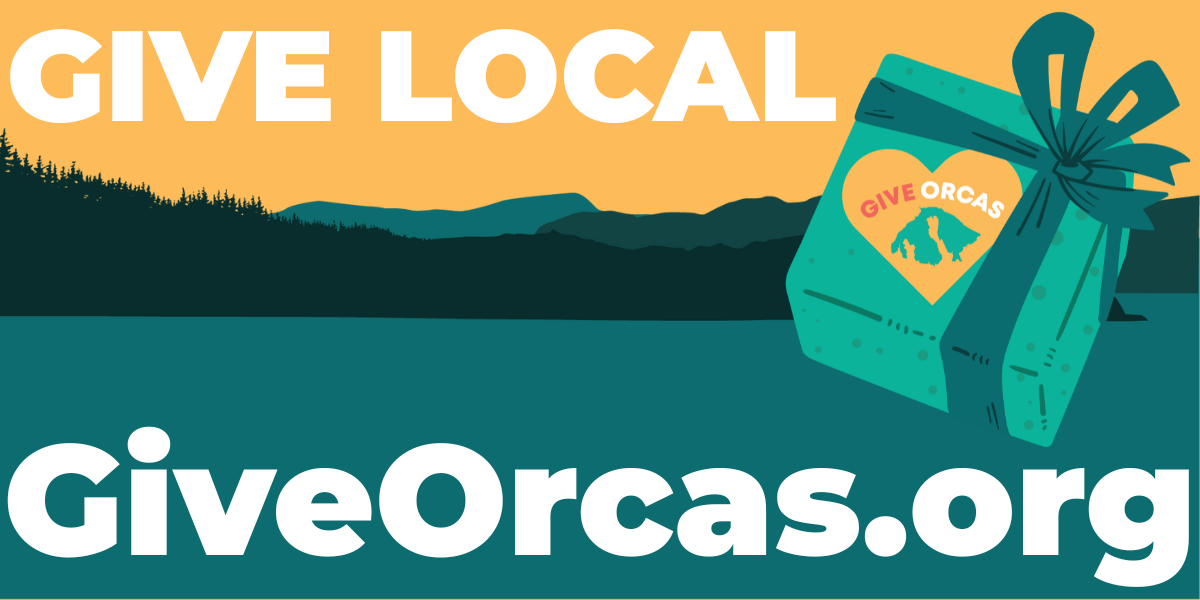||| FROM MICHAEL RIORDAN |||
Over a hundred islanders came to Madrona Point (known to the Lummi as Ts’el-xwi-sen) Tuesday afternoon, May 11, to view and bless the Red Road to DC Totem Pole carved by the House of Tears Carvers for presentation this summer to President Joe Biden. Among those present were our County Commissioner Cindy Wolf and Washington State Representative Debra Lekanoff, who gave a brief introductory greeting noting Indian nations’ respect for the land and environment that is embodied in the pole.

Representative Debra Lekanoff addressing the audience, with Jewell Praying Wolf James standing at left.
Chief carver Jewell Praying Wolf James (Se Sealth) subsequently delivered an impassioned summary of the pole iconography, emphasizing how US culture has long denigrated the female. Red hands at the top represent Indian women stolen from the midst of tribes, raped and murdered. And a grandmother and daughter at the base represent how the remaining female members have filled the tribal chasm thereby created. These icons, he declared, have much broader meaning for our male-dominated culture, which has been abusing Mother Earth for centuries.
The Red Road to DC pole will travel the breadth of the United States this summer, visiting sacred Indian sites and places such as the Bears Ears National Monument and the Black Hills of South Dakota before presentation to President Biden at the White House. Following that, it will be installed at the Smithsonian Institution’s National Museum of the American Indian and become part of that museum’s permanent collection.
At the end of his presentation, James told the gathering that another totem pole carved by the House of Tears Carvers several years ago is on its way to Orcas Island later this summer. Supported in part by a generous grant from islander Janet Alderton, the Anthropocene Pole has been similarly touring the nation for the past few years. It will be installed at the Orcas Island Public Library, in the plaza on its southwest side, overlooking the village and waters of Eastsound. A more fitting site for this pole can hardly be found in the San Juan Islands, which before 1850 were the summer home of Lummi Indians who fished the islands’ prolific waters, harvesting the then-abundant salmon.
“Hysh’qe, thank you,” chanted Che Blaine of the local Odd Fellows lodge to James and the other Lummi carvers in closing the ceremony, noting this history, “Welcome home.”
Featured photo: House of Tears Carvers painting the Anthropocene Pole in 2018. Michael Riordan.
**If you are reading theOrcasonian for free, thank your fellow islanders. If you would like to support theOrcasonian CLICK HERE to set your modestly-priced, voluntary subscription. Otherwise, no worries; we’re happy to share with you.**









Thank you for writing this summary, Michael. The Tuesday ceremony was a wonderful and powerful event.
Agreed that this was a terrific, moving event. The Orcas Island Library looks forward to further discussions about possibilities on the Library grounds regarding the Anthropocene totem pole.
Phil Heikkinen, that’s great news. Please let the community know if there’s something we can do to help.